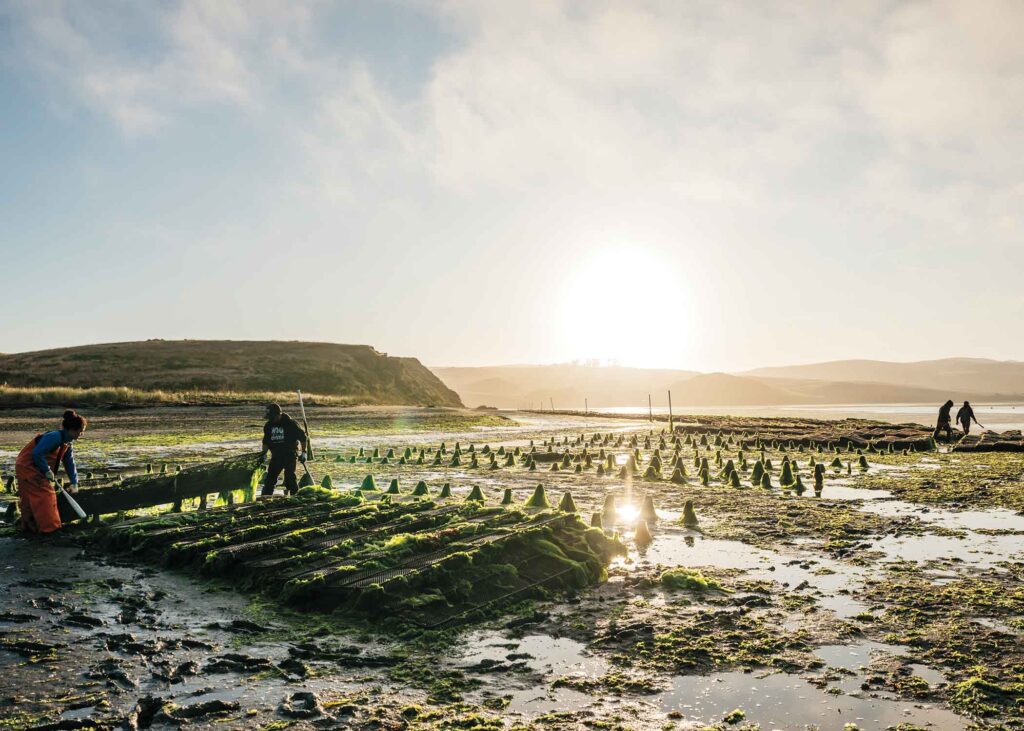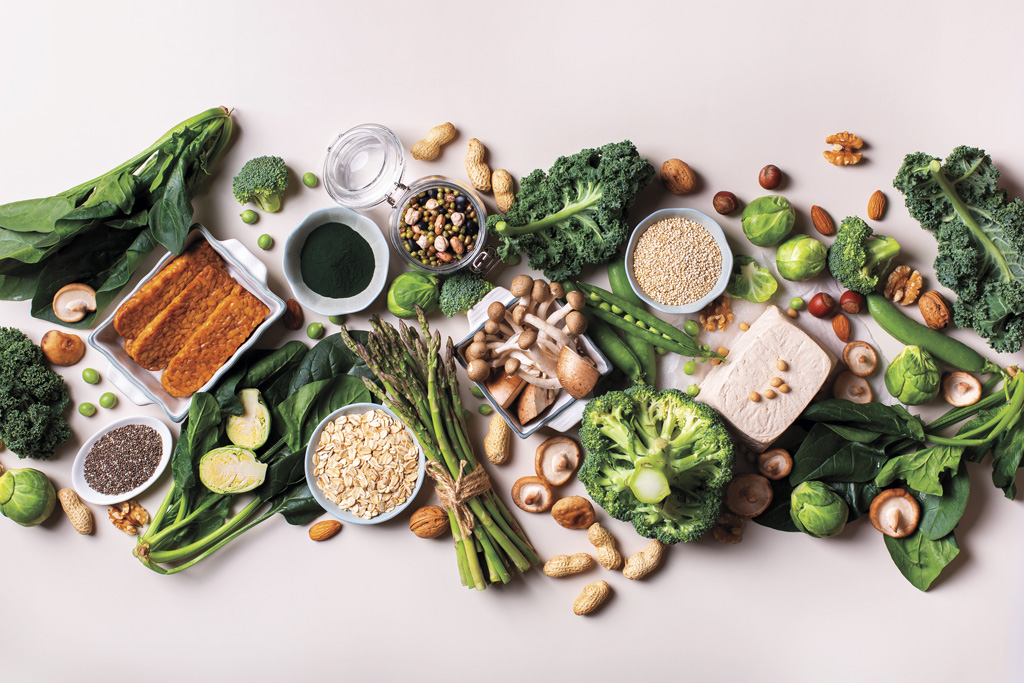Food & Drink
Marin’s Own Tomales Bay Is a Biodiversity Hotspot
 Tomales Bay Shipwreck, Inverness (photo by Elyse Omernick)
Tomales Bay Shipwreck, Inverness (photo by Elyse Omernick)In Marin County, natural diversity starts at one’s feet. Geology ranging from sandstone to volcanic rock gives rise to coastal grasslands, fragrant bay laurel and the grandeur of redwoods. Gray fox, bobcats and foothill yellow-legged frogs roam free. Above dollops of fog, birds travel the Pacific Flyway, a migratory path that brings hundreds of avian species to local habitats.
“Marin County is a biodiversity hotspot on a global scale,” says Eric Ettlinger, an aquatic ecologist with Marin Municipal Water District (MMWD). “The public lands in Marin — Golden Gate National Recreation Area, Marin Water’s watershed, different state parks, Point Reyes National Seashore — are part of what is called the Golden Gate Biosphere Reserve,” a designation granted by the United Nations Educational, Scientific and Cultural Organization (UNESCO).
Yet somewhat hidden from plain sight is the stunning biodiversity of local waterways and ocean ecosystems. “We have animals that come here from all over the Pacific Ocean basin, the biggest ocean basin in the world: turtles from Indonesia and albatross from Hawaii, and the blue whales come here from Costa Rica, so it’s just this really rich area for marine life,” says Carol Preston, education and outreach coordinator for the Greater Farallones National Marine Sanctuary, of which Marin’s coastal waters are a part. “What’s so special is the diversity and abundance of wildlife that’s found here.”
At the nexus of Marin’s landscapes, waterways and the Pacific Ocean is Tomales Bay, a West Marin wildlife hot spot brimming with biodiversity below its surface. “Tomales Bay itself is a super-rich habitat,” says Preston of the estuarine environment. “Wherever you have all these types of habitats meet and connect are really the best places to find wildlife.”
A Vital Habitat
As an estuary with brackish water along with diverse habitats (including eelgrass beds, tidal sands, mudflats and tidal creeks), Tomales Bay provides the ultimate recipe for abundant and diverse wildlife. At the foundation of the Tomales Bay ecosystem is eelgrass, a seagrass that offers a variety of benefits and a habitat for wildlife and humans alike. “The eelgrass sequesters a lot of carbon and also protects our coast from erosion, so it’s kind of a good-news ecosystem for climate,” says Preston.
With that eelgrass habitat, Tomales Bay also serves as a fish and harbor seal nursery, fostering “salmon, halibut, herring, flounder, leopard sharks and bat rays,” says Preston. “In the mud itself there are all kinds of invertebrates that support that life.” Such a productive food web means that the bay provides vital sustenance to wintering shorebirds, seabirds and waterbirds as well. In total, more than 2,000 wildlife species have been documented in Tomales Bay, making it a site of extraordinary biological interest.
Great Migrations: Coho Salmon
Tomales Bay is the stage for a millennia-long tradition, as coho salmon are born in local streams, migrate out to open ocean and return to their birthplace nearly three years later to start the next generation. The coho salmon, an endangered species in Marin, traverse Tomales Bay at two key moments in their life cycle: both as young smolts heading out to sea for the first time and as breeding adults returning to fresh water to spawn.
“Typically the coho salmon start returning to freshwater in November with the first rains of the season, and their numbers increase, usually peaking in December with heavier rains. They need the rainfall to increase depth in the stream and they also need the stream to be a little bit muddy so that they can avoid river otters,” says Ettlinger.
Ettlinger and the MMWD pay close attention to rainfall and streamflow to ensure that enough water is available for the endangered salmon to survive. But as drought limits water supply, the task becomes more difficult. “The drought is going to have an impact on the salmon and Lagunitas Creek. They are not going to have as much water as is ideal for them,” says Ettlinger. He hopes, however, that Marin residents can play a helpful role in conserving water, which will impact how much of it can be released from Kent Lake to support the coho salmon.
Whereas many other populations of salmon are maintained by hatcheries, the Lagunitas Creek coho salmon are particularly important as a wild population, which is key for conserving natural biodiversity. Adding to the distinction of these Lagunitas Creek coho salmon is the fact that they are located at the southernmost extent of the species’ global native range, Ettlinger notes. As a result, the Lagunitas coho salmon are adapted to slightly warmer waters than others, with corresponding genetic variation that may be vital for coho salmon survival in a world of climbing environmental temperatures brought on by climate change.
Though constituting one of the healthier populations of wild coho in California, the local coho have dwindled to a small fraction of their historical numbers, so conservation efforts are essential. “We typically get about 400 adult salmon returning per year on average and that’s down historically,” says Ettlinger. Some accounts place the population in the thousands just over 60 years ago.

Oyster Farming
And while it might not seem obvious at first, humans also are part of the Tomales Bay ecosystem. Oyster farming has been a component of the Tomales Bay ecology for well over a century. The Tomales Bay Oyster Company, for example, “has been the oldest continuous oyster company in California,” says Heidi Gregory, owner and farm manager at the operation, which was originally established in 1909 after successful experimentation with introduced varieties alongside native Olympia oysters.
Both Tomales Bay Oyster and Hog Island Oyster companies are deeply tied to the intricacies of Tomales Bay’s ecology. “Oysters as a food are more about place than just about any other food I can think of; they really do reflect the environment they are grown in,” says John Finger, founding partner and CEO at Hog Island Oyster Co.
Oyster farming in Tomales Bay depends on a difficult balancing of forces: water chemistry, temperature and habitat diversity all play a role. Variation in these factors can impact the growth of the oysters, what they are eating, their mineral and salt content and, ultimately, their taste. “I can taste a difference in oysters from various parts of this bay,” says Finger. “The Pacific oyster, our main variety, has been described as having a kind of smoky-sweet flavor.” Along with location, even seasons within Tomales Bay can be detected in the oyster’s taste. “Right now, because we haven’t had any rain, the oysters are way more salty because the salinity is higher,” says Gregory.
For Gregory and Finger both, success in oyster farming is tied to the health of the local ecosystem. “Mother Nature is who you are ruled by. She’s the one who makes the rules and we try to do our best,” says Gregory. But oyster farming has benefits beyond food supply: as filter feeders, oysters themselves help to maintain clean water in the bay, which improves light penetration and the growth of eelgrass.
Experiencing Biodiversity
Whether we’re tasting Tomales Bay in a local oyster or bearing witness to the spectacular return of coho salmon to natal streams, the waters of Marin offer much to the people who live here. Humans aside, hundreds upon hundreds of animal species are sustained in the intricate web of life at the convergence of fresh and saltwater ecosystems.
As such, Marin offers an incredible opportunity to appreciate and protect biodiversity. “Having salmon return to a human environment inspires people to think about conservation, and to think about their water and land use,” says Ettlinger. “I really hope that the salmon return for the benefit of the watershed and other species, but primarily I think that there is a benefit in environmental awareness.”
Sample the Sounds, Sights and Tastes of Tomales Bay
Kayaking Tomales Bay with Sanctuary Explorations
“One of my favorite trips is going for a nighttime paddle when the bioluminescence is out. No matter where you look it’s magical,” says Carol Preston. Check the website for excursion information, including the bioluminescence kayak trip, at www.farallones.noaa.gov.
Coho Salmon Observation
Mark your calendar to check out the waters of Lagunitas Creek as they flow toward Tomales Bay, one of the prime places to see salmon in their natural habitat. “The best time to see the spawning salmon is two days after a decent rain in December,” says Ettlinger. Sir Francis Drake Boulevard, Lagunitas
Tomales Bay Oyster Company
Buy fresh oysters and fixin’s at the Tomales Bay Oyster Company stand (cash only). Owner and farm manager Heidi Gregory recommends bringing a cooler and enjoying the oysters at a local state park or beach nearby. 15479 Highway One, Marshall
Hog Island Oyster Co.
Purchase oysters at the Hog Shack and take them home to grill or enjoy them alfresco at The Boat Oyster Bar (by reservation) overlooking Tomales Bay. “If the crew is harvesting oysters, you see that happen,” says John Finger. 20215 Highway 1, Marshall











